Value Drivers to increase the sale of your business.
Once a buyer has determined to enter the marketplace in search of a company that meets their specific criteria, they evaluate potential transactions based on the presence of value drivers. Value drivers are characteristics that influence the amount a buyer will pay for a company. Whether they are real or perceived by the buyer.
It is essential to recognize that a particular value driver may have vastly different levels of importance among interested buyers. Understanding and enhancing value drivers in a business prior to initiating the business sale process will maximize the ultimate sale price. Value drivers are not merely numbers. They also include intangibles and human capital. Value drivers distinguish successful companies from their competitors and are crucial to receiving the highest sale price possible.
Primary value drivers include:
- Stable and predictable cash flow
- The nature of products and services
- Clearly identifiable strategy with growth opportunities
- Diverse customer base
- Strong management team and transitional training
- Reliable financial information and controls
Secondary value drivers include:
- Effective operating systems
- Well-maintained business facilities and equipment
- Owner’s motivation for selling
- Seller family dynamics
- Business and personal goodwill
Primary-
Stable and predictable cash flow
All value drivers contribute to a stable and predictable cash flow. Cash flow is the single most important value driver for a business and many of the other value drivers described below directly affect it. Predictable and reliable cash flows reduce the buyer’s perception of risk. This in turn increases the purchase price.
If recurring revenues comprise a material portion of a company’s overall revenues, the recurring revenue stream can be valued separately and at a higher level than the nonrecurring revenues. Buyers are also willing to pay the highest amount when they can expect an increase in cash flow after their purchase and well into the future. The Buyer’s ability to grasp and understand the business will add to their perception that cash flows will be predictable and sustainable after closing.
The nature of products and services
The nature and make-up of your company’s products and services are an important value-driver. What are your company’s competitive advantages? Are there high barriers to entry for would-be competitors? Is there high and ongoing demand for your company’s products and services? How will technological and other advances or shifts in the market affect your company’s products? What is the value that the Company delivers to its customers?
The existence of proprietary products and services, patents or other intellectual property, products serving niche markets, and a value-added component to your company’s offerings all drive value higher. Buyers will pay a premium price for businesses that have realistic strategies and numerous opportunities for growth. The buyer must be able to see specific reasons why cash flow, and the business itself, will continue to grow after the sale.
Clearly identifiable strategy with growth opportunities
Growth strategies can be based on industry dynamics, new products, or product lines. It can also be based around enhanced marketing campaigns and sales efforts, or growth through acquisition. A well-developed plan illustrating key points about a company’s growth strategies will provide the highest sale price by convincing the buyer that his investment will increase in value over time. Also, the greater the strategic value a business has to a buyer, the greater the likelihood that the buyer will pay a premium price.
Strategic value refers to the acquirer’s perception that it can increase the value of the acquired company or that the acquired company will increase the value of the acquiring company. This strategic value can arise from complementary products and services, a reduction in the acquirer’s time-to-market for new products or services that are provided by the acquired company, operational synergies from elimination of duplicate functions, and the increased market share and reduction in competition arising from acquiring a competitor.
Although it may seem counter-intuitive that a buyer will pay a premium for strategic value that the buyer ultimately creates, the buyer may be willing to increase his offer based on the perceived strategic value in a competitive business sale process wherein multiple buyers are bidding on the Company. An established and diverse customer base is another primary value driver. An extensive, well-developed customer list adds value because the buyer will be receiving many accounts to continue operating the business and generating profits. If a business only serves a few major customers, or one or more customers each comprise a high percentage of revenues, a buyer will be concerned about the risk of losing a major customer shortly after closing. This could cause the buyer to potentially pay less than if there were no customer concentration issues.
Diverse customer base
Long-term customers that generate frequent repeat sales are great value drivers and illustrate the company’s ability to bring in new customers while maintaining existing customer relationships. Further, if referrals from existing customers provide a steady stream of new business. This not only speaks volumes about the company’s products and services, but also its ability to attract new customers from word-of-mouth versus traditional (and more costly) marketing efforts. It is also important for a higher value that customers are more loyal to the Company’s products and services and less loyal to the owner(s) or individual employees.
Strong management team and transitional training
A strong management team is a significant value driver for any business. This team includes the people who are responsible for setting strategy and objectives, analyzing activities, measuring results, and motivating employees. The best management teams are diverse in talent and include a variety of skills. Just as important as talent, a management team also needs to be willing to stay with the Company after the sale.
Many prospective buyers are concerned about management continuity after closing, desiring that key employees remain to run the business smoothly and maintain established customer and vendor relationships. Buyers will pay a higher purchase price when concerns about customers, vendors, or the future of the company are alleviated through a strong management team committed to staying with the Company long-term after closing. If the owner is an active member of the management team, then the owner also must be willing to remain with the business after the sale for transitional training or long-term growth.
Reliable financial information and controls
Reliable and strong financial controls are vital to earning the highest price. Additionally, this refers to the company’s financial reports (balance sheets, income statements, and cash flow statements) and its internal accounting systems, financial procedures, and controls. Furthermore, effective financial controls support the notion that a company is consistently profitable. Moreover, at some point, the buyer will perform extensive financial due diligence on the selling business to ensure the accuracy and reliability of the company’s financial systems, procedures, and reports.
The best way to document effective financial controls and the accuracy of the Company’s financial statements is through a certified audit by an established CPA. Moreover, a professional audit provides the buyer with confidence that the Company’s financial records are accurate and that effective financial control systems are in place. Additionally, a lack of buyer confidence in the financial reports and systems is one of the most common reasons for a business sale to collapse
It is critical that the owner(s), the CFO, and/or the Company’s external CPA identify any financial discrepancies or issues and correct them before beginning the sale process. The time and money spent on an audit to deliver accurate financial statements is imperative. It assures potential buyers of the integrity of the company’s financial systems and records. It will pay significant dividends in the form of a higher sale price.
Secondary-
Effective operating systems
Effective operating systems and procedures will also contribute to receiving the highest value for a business. Operating systems include the computerized and manual procedures for business operations. These may include customer databases, human resource manuals, business reports, inventory systems, quality controls, and software. The appropriate systems will vary depending on the business.
Well-maintained business facilities and equipment
The business facilities and equipment should be well maintained to realize maximum value for the Company. A buyer will not pay a premium, and may very well discount his offer, for a disorganized warehouse, office, or other building. Seeing disorganized or poorly maintained facilities and equipment may cause the buyer to perceive that  other aspects or the business may be similarly disorganized (employee records, financial records, compliance records, etc.).
other aspects or the business may be similarly disorganized (employee records, financial records, compliance records, etc.).
Owners should ensure that the company’s facilities and equipment are maintained in an organized and peak condition before beginning the sale process. Buyers will appreciate that their investment will not include major repairs and that all equipment and inventory will be easy to locate and identify. Lastly, are the Company’s facilities large enough and machinery sufficient to accommodate some level of modest sales growth? A buyer does not want to have to look for additional space or immediately invest in new equipment shortly after closing. A moderate level of excess capacity in facilities and equipment will be appreciated and valued by a potential buyer.
Owner’s motivation for selling and seller family dynamics
An owner’s motivation for selling and family dynamics in the business represent other less important value drivers. When a buyer can easily understand and appreciate the Seller’s motivation for selling, the buyer’s perception of risk will be lower. For example, retirement is a simple and straight-forward motivation for selling that any buyer will understand. Also, fewer family members or a complete lack of family members involved in the business will generally help drive the value higher. It behooves a business owner to remove any family members from the payroll who are not performing actual work for the company and honestly evaluate the job performance and contribution of remaining family members prior to beginning the sale process.
Business and personal goodwill
The amount of goodwill included in the company’s assets may be another value driver for a business. Goodwill represents that portion of the purchase price that exceeds the net fair market value of the assets. Goodwill can comprise a large portion of the total value. There is business goodwill and personal goodwill.
Business goodwill includes brand recognition, company reputation, market share, well-developed and documented policy and procedure manuals, the skills and tenure of employees, etc. Personal goodwill includes the owner’s:
- Name and personal reputation
- Individual skills and abilities
- Contacts
- Importance to customer and vendor relationships
- The extent to which sales arise directly or indirectly from the owner’s personal efforts.
- The extent to which employees are loyal to the owner versus the Company.
The greater the ratio of business goodwill to personal goodwill, the greater the overall value of the Company, particularly if the Seller(s) will not be staying with the business long-term. When the Seller is not critical to day-to-day operations, for example:
- Sales efforts
- Customers
- Employees
- Vendor relationships
A buyer will perceive less risk and pay more for the Company. Of course, some of this perceived risk can be mitigated with a long-term or transitional employment contract for the Seller. However, the Seller must be willing to remain with the business after the sale. Many of the owner’s decisions prior to selling the business will be critical in determining the value that buyers will ultimately place on the business.
No business is perfect. All companies have strengths and weaknesses. Earning the highest sale price can be attained by focusing a buyer’s attention on value drivers and positioning perceived weaknesses as opportunities. The primary role of an investment banker is to identify, articulate, and promote the value drivers that do exist in a business.
